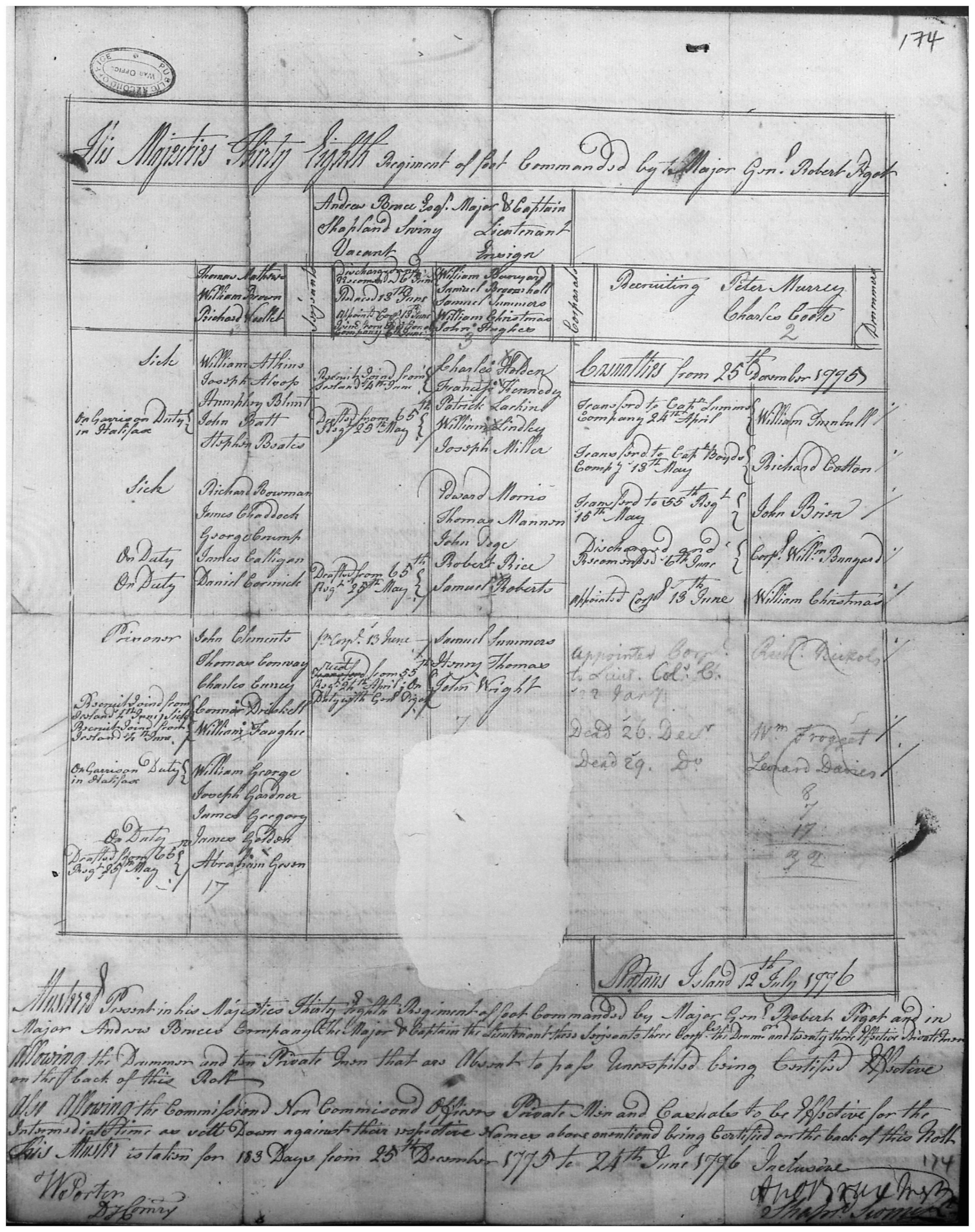- Submitted on
- 0 comments
The words “muster roll” flow easily off the tongue of a military historian or veteran genealogist. Some researchers, however, may have some recollection of the term, but are unsure as to its exact nature.

Muster rolls can be a valuable document when researching an individual, family, military unit, or conflict. In this post, we will go over some of the general properties of Revolutionary era muster rolls, and how they might be used for research purposes.
What can you get from a muster roll?
The official function of muster rolls was that of enumeration of a particular military unit or a crew of a ship, recorded by officers for administrative purposes to distribute pay. The term muster has also been used in a broader sense for any list of names. The most basic information which a muster roll contained is the location of a person, or a group of people, at a certain place and time.

(Great Britain, War Office,The National Archives, Muster Books and Pay Lists (WO 12/5171-5172): 38th (1st Staffordshire) Regiment of Foot: 1775-1789)
Additional information which may be gleaned from muster rolls includes:
- Location of military posts for individuals and involvement in particular conflicts, campaigns, and battles.
- Various assignments given to members of a unit, sometimes within other units. Notations of this type may include phrases such as “On Command,” “On Guard,” “On the Expedition,” or “Recruiting.”

(Library and Archives Canada, British Military and Naval Records)
- Individuals drafted, transferred, or discharged are often noted.
- Advancement through the ranks of commissioned and non-commissioned officers may be traced; quick progression could be indicative of a person’s aptitude in combat and leadership.

(Guy Carleton, British Headquarters Papers, 1747-1783, The National Archives)
- Tracing connections between individuals who served together, then perhaps were discharged and moved to the same community, is often possible using muster rolls.
- Illness, injuries, and deaths were often recorded in muster rolls, including details such as “Sick in Hospital,” “Sick in Quarters,” and the cause or action of death.

(Great Britain, War Office, The National Archives, Muster Books and Pay Lists (WO 12/11233, 11237-8): Royal West India Rangers: 1806-1819)
- Capture and imprisonment by enemies was usually recorded in the unit’s muster rolls for the duration of time which a soldier was held as a prisoner of war (POW).

(Library and Archives Canada, British Military and Naval Records)
- Abandonment of post or absent without leave (AWOL) and missing in action (MIA) were also seen as notations.

- Using the term muster roll in the wider sense, muster rolls sometimes included groups of veterans and their children and wives, or civilian settlers. For example, men, women, and children with loyalist regiments were listed and enumerated at Passamaquoddy, New Brunswick in 1784.
Dive into and explore muster rolls as your way into family, military, and social history!
Note: The Loyalist Collection holds a wide range of muster rolls from the Revolutionary era as part of its Military records category. More information on loyalist muster rolls can be found on the On-line Institute for Advanced Loyalist Studies.
Leah Grandy holds a PhD in History and works as a Microforms Assistant at the Harriet Irving Library.

Add new comment